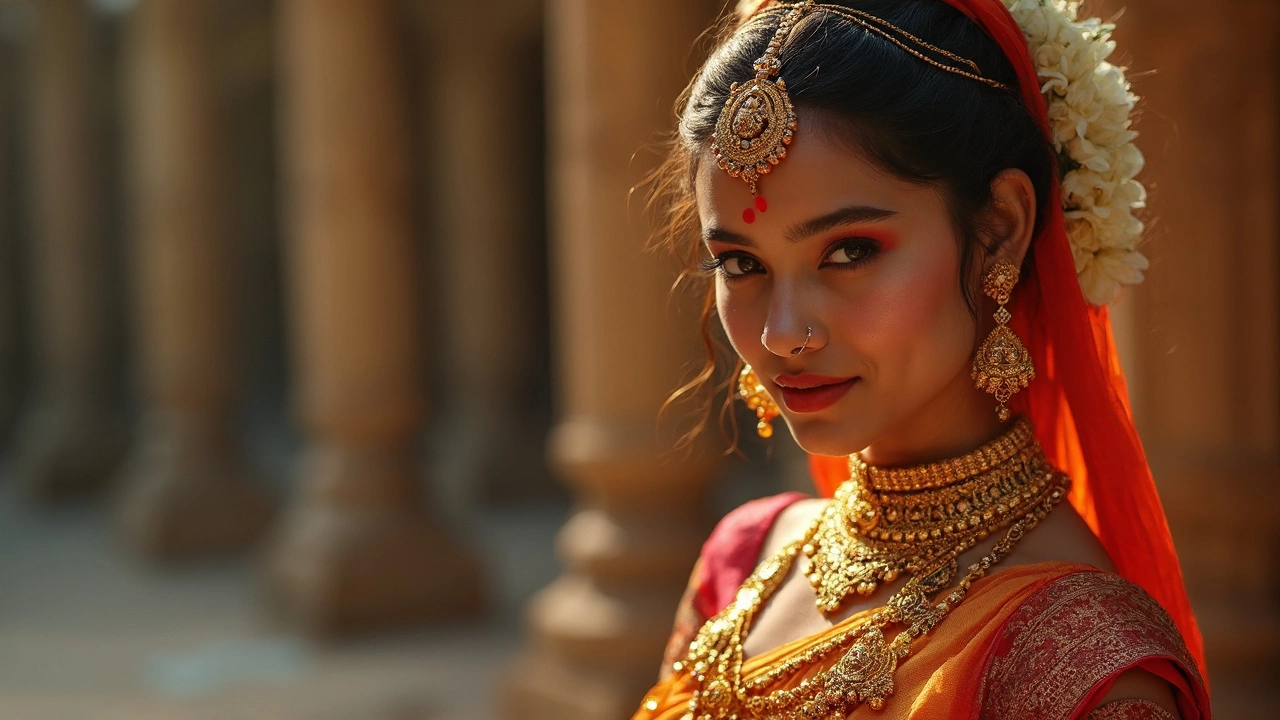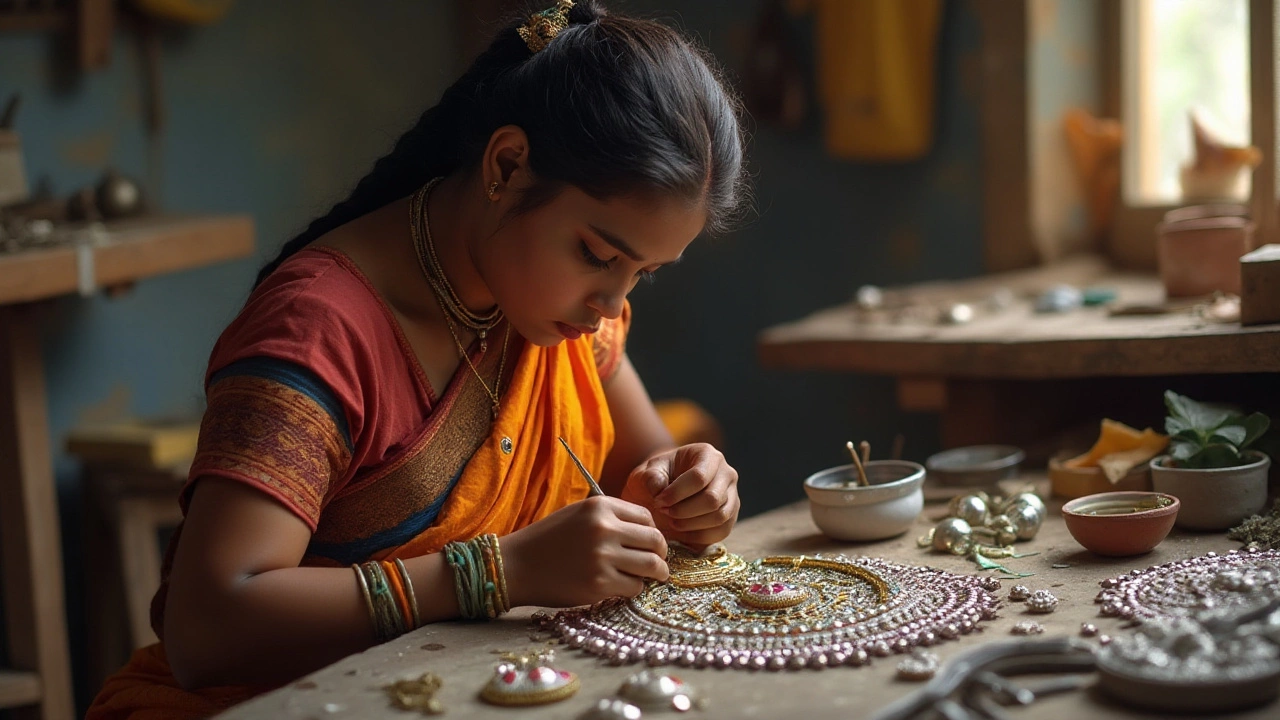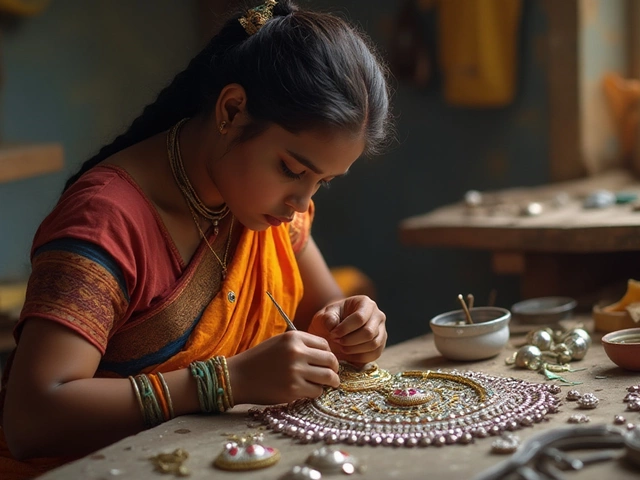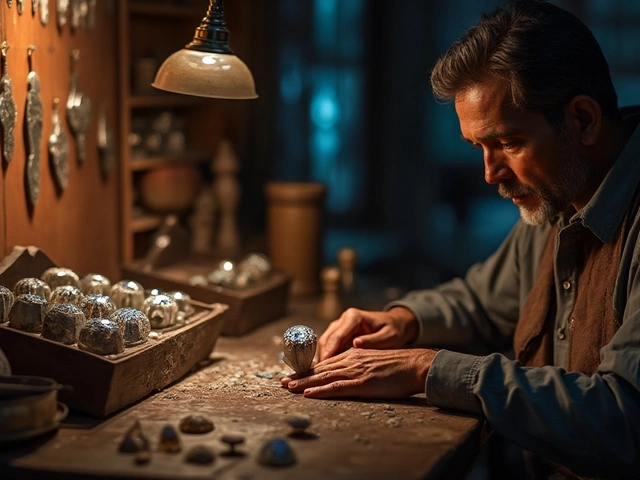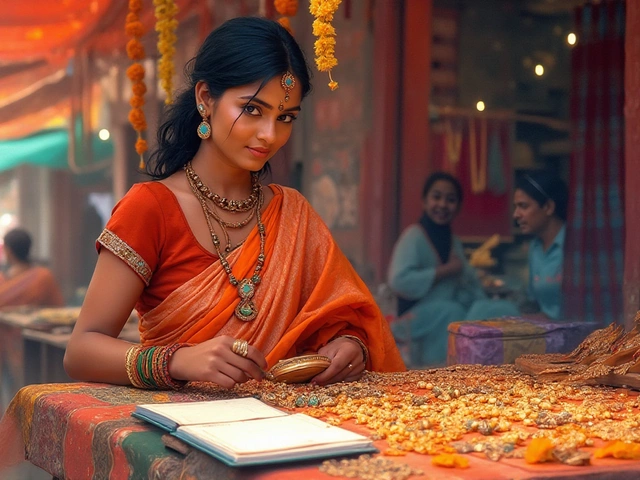Traditional Ornaments: Your Quick Guide to Classic Indian Jewelry
When you hear "traditional ornaments" you probably picture shining gold bangles, intricate nose rings, and the sparkle of a wedding maang tikka. These pieces aren’t just accessories; they’re stories that have traveled through generations. Below you’ll find the most common types, what makes each special, and simple tips to pick and look after them.
What Makes an Ornament "Traditional"?
Traditional Indian ornaments are usually made from gold, silver, or a mix of both, often set with pearls, diamonds, rubies, or emeralds. They follow designs handed down from regional customs – think Rajasthani Kundan, South Indian Temple jewellery, or Bengali gold filigree. The motifs often echo nature (lotus, peacock) or mythology (Ganesha, Lakshmi).
Must‑Know Styles and Their Meanings
Bangles: Gold or black‑enamel bangles are a staple for brides and everyday wear. In many families, a set of 6‑9 bangles signals a married woman.
Nose Pins & Rings: From tiny studs to big hoops, nose jewellery marks femininity and can indicate regional identity. Some designs carry protective symbols.
Earrings: Jhumkas, chandbalis and studs each have a place. Jhumkas are popular in the north for festivals; chandbalis are favoured in the south for dance performances.
Maang Tikka: Worn on the forehead, this piece sits at the hairline and adds a regal touch to bridal looks. It often features a central gemstone flanked by intricate metalwork.
Mangalsutra: A black‑beaded chain with gold pendants, it’s a marital symbol that doubles as a fashionable necklace.
Rings & Anklets: Gold rings with enamel work and ankle bells (payal) complete the traditional look, especially during weddings and festivals.
How to Choose the Right Traditional Ornament
1. Know the Purity: Look for the BIS hallmark – 22K (916) for gold, 925 for silver. Higher purity means more value but also softer metal.
2. Check the Craftsmanship: Hand‑crafted pieces will have tiny variations; machine‑made ones feel uniform. Feel the weight – solid gold feels heavier than plated.
3. Match the Occasion: For daily wear, go for simpler designs. For weddings, choose heavier, gemstone‑rich pieces.
4. Fit Your Budget: Set a limit, then compare similar designs. Sometimes a silver base with gold plating gives the look without the price.
Simple Care Tips to Keep Your Ornaments Shining
• Store gold separately in a soft pouch to avoid scratches.
• Wipe silver with a gentle cloth to prevent tarnish.
• Remove jewellery before washing dishes or using harsh chemicals.
• Take gemstones to a jeweller for periodic cleaning – a soft brush and mild soap usually works.
Traditional ornaments are more than just metal; they’re a link to culture, family, and personal style. With the right knowledge you can choose pieces that fit your look, last for years, and maybe even become heirlooms for the next generation.
Temple Jewellery: What Exactly Does It Mean?
Temple jewellery is a unique style of Indian jewellery originally made for adorning gods and goddesses in temples. Over time, this style has become a favorite among dancers, brides, and anyone who loves traditional Indian looks. The pieces are known for their bold designs, use of gold, and motifs like gods, goddesses, and temple patterns. This article breaks down what makes temple jewellery distinct, its history, where it’s used today, and tips on spotting real pieces. You’ll get a real feel for why this style is more than just decoration—it’s packed with culture and story.
Unveiling the Beauty of Apala Temple Jewellery in India
Apala jewellery, a timeless expression of artistry from India, stands out for its exquisite craftsmanship and cultural significance. Predominantly crafted using silver and adorned with precious stones, it encapsulates the grandeur of temple architecture. These pieces are cherished not just as ornaments but as stories of devotion and tradition. Exploring Apala jewellery offers insights into India's rich history and the artisans' dedication behind every intricate detail.
